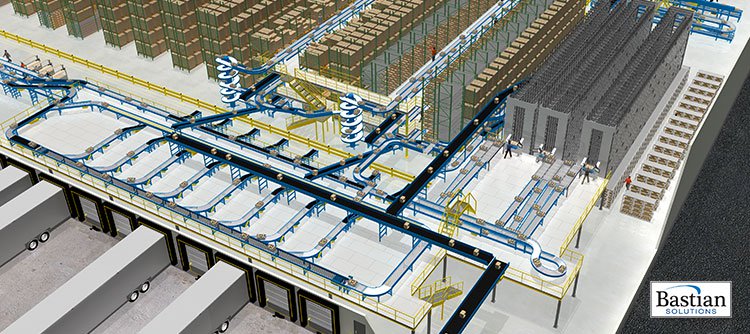
How to Select and Optimize Cost Effective Material Handling Systems
Adam Cole | 20 September 2016
In any distribution or manufacturing operation, material must be moved from point A to point B. This movement is not free; so whether it is people, conveyors, or automated guided vehicles (AGVs) being used to transport goods, the cost to move material has a significant impact on a company’s bottom line. To keep this cost as low as possible, a three step process for selecting material handling systems should be used. This process includes data analysis, requirement definition and concept formulation, and continuous evaluation and improvement.
Analyze
Before considering any material handling solution, it is critical to look at all the products that will be transported, and then never forget them. It sounds obvious, but it is surprisingly easy to lose sight of this because, unfortunately, it is human nature to focus on whatever technology meets the concern of the moment.
Cost is a great example because, unsurprisingly, it seems to be the concern of most moments. In an effort to save money, it is tempting to pick the least costly solution that looks right. For example, many of our clients only consider their most common products when evaluating material handling systems. This makes sense. It is what they deal with most of the time, thus it is at the top of their mind, so a solution that can transport these items looks correct.
Additionally, the other items tend to be “fringe” products: very large or very small items that require more expensive solutions. When trying to install a system on a tight budget, it is understandably tempting to spend less money for a system that works for most circumstances, but you could lose money in the long run. That is why analysis is so important. A proper analysis will consider the characteristics of all products, the demand for those products (i.e. throughput rate), and the costs associated with handling them in the current process.
With this information, trade-off studies can be made in the Define and Design stage that show the advantages and disadvantages of implementing various system options. For instance, the analysis could show that a more expensive system is necessary to handle the transportation of 100 percent of all products, but trade-off studies may show that such a system will also result in labor savings that are greater than the additional cost, positively affecting the bottom line. It is also possible that this will not happen, but the only way to know for certain is to conduct an analysis to ensure all variables are considered.
Define and Design
With the analysis in hand, it is now possible to define system requirements that meet business objectives. Those requirements will then be translated into system concepts, and trade-off studies will be conducted to identify the concept that best meets all the requirements. That concept will become the final design and will be installed - but don’t think the job is now done! To get the best possible results, companies must continuously evaluate and improve their system.
Evaluate and Improve
After installation, it is important to evaluate the results. Is the system being used as intended? Is it meeting the requirements? Are the requirements still valid? Is the bottom line being positively affected? These are some of the questions companies must continuously ask themselves to ensure they have the most effective material handling system possible, and they should start asking these questions immediately after installation.
For instance, we recently finished a multi-million dollar system for one of our customers. After watching them operate it for a few days, we noticed that, due to fundamental process changes that occurred after installation, they could not use part of the system as intended. As a result, an employee was required to manually move boxes from one conveyor to another, creating additional labor. Fortunately, for a small additional cost, we are able to automate this movement, which will save our customer thousands of dollars a year.
The Bottom Line
The bottom line to positively affect your bottom line is to use analysis to gather data in order to define requirements, then create concepts and test them through trade-off studies, and continually improve the material handling system through constant evaluation.
At Bastian Solutions, we help companies do this every day. Our engineers have decades of experience analyzing data, defining requirements, creating concepts, and then designing and installing complete systems. We believe in partnering with our clients, so we will always be there to help you evaluate and continuously improve your system to ensure you have the best material handling solution possible.
Adam is a manager at Bastian Solutions based in Philadelphia. He received his Bachelor of Science in Electrical Engineering from the University of Kansas, his Master of Science in Applied Physics from the Naval Postgraduate School, and his Master of Business Administration from New York University. Prior to joining Bastian Solutions seven years ago, Adam served as an officer in the U.S. Navy for ten years.
Comments
No comments have been posted to this Blog Post
Leave a Reply
Your email address will not be published.
Comment
Thank you for your comment.